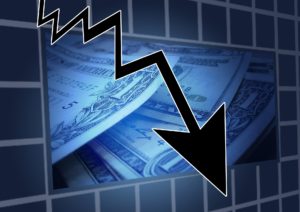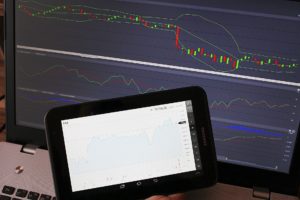Trading is a skill and with learning any skill there are pitfalls and missteps along the way. Understanding that these common trading mistakes are part of the process and learning to reduce them could help you develop a more disciplined, consistent approach to trading.
Here are 10 of the most common trading mistakes that new traders make (and tips for how you can avoid them.)
1. Emotional Trading

Nobody can properly prepare a new trader for the emotional roller coaster and even the most experienced traders grapple with this after years in the business.
Why is it so difficult to control your emotions? It may lie in our genetic make-up. Matt Golden, market analyst for TraderPlanet, discussed the science of trading and emotions at the VantagePoint Power User Seminar in Tampa in February.
“When you feel emotions while trading, there is a physical, chemical reaction that is happening inside of you. These chemical levels are different for everyone. This is why trading is different for everyone,” Golden said.
Golden points out that the emotions you feel are an involuntary response to those chemicals. This is part of human evolution, so it must be understood, and then controlled.
“You have evolved to avoid pain and discomfort and developed a flight instinct. This is why most traders embrace flight. Flight from the market (at the worst time), flight from systems (because of the discomfort of drawdown), flight from success. This is all normal,” according to Golden.
However, learning to take the emotion out of your trading is integral for long term success.
2. Poor Preparation and Planning

In trading, Winston Churchill’s famous quote, “Fail to plan, plan to fail” rings especially true. When you enter the market arena, you had better be prepared. However, few traders perform the necessary due diligence before moving headlong into the markets.
You can’t just walk into the market with a handful of money and expect to take money away from the professionals. If that’s the case, you’re gambling, not trading. Many who trade successfully rely on a trading plan. The same way a business plan outlines the establishment and development of a proposed business in detail, a trading plan outlines, in detail, a structure for trading.
Trading plans are fluid in the sense that they are being tested constantly and amended to improve overall performance and profitability, but strict observance of the rules of the trading plan is often the hallmark of a successful trader.
3. Failing to Put a Trading Plan in Writing

By writing down your trades in a journal, you can learn from your mistakes. But all too often newer traders fail to write things down and therefore fail to see the patterns and habits they may be forming.
When you write down your rules everything changes. Instead of hoping that the market is going to do what you want, or wondering if you should just hold on a bit longer, you go and look at your rules and they will tell you what to do.
Once you write down the rules of your trading plan, you have a base to work with, which will allow you to grow and expand your plan to capture any market insights you learn while implementing it.
This changes the dynamic of mistakes. Mistakes are now not about whether you win or lose on a trade. Rather, they are about whether you follow the rules of your plan. It establishes discipline in your trading, which is critical to your success.
4. A Lack of Objectivity

Most traders don’t want to acknowledge that a trade could turn against them. They enter the market assuming they’ll be successful, refusing to look in the rearview mirror. It’s also common for emerging traders to use a calculator to predict how much they’ll make and how they’ll spend the unrealized profits!
Entering the market with a neutral attitude is a good approach. You need to believe anything can happen in the market at any time. This is what being objective is all about. A profitable trader needs to be thinking constantly that the market can do whatever it wants whenever it wants at any time. Many new traders get into trouble by thinking the market can’t or won’t do certain things.
To be objective, you cannot put your demands and expectations on the market. This doesn’t mean that you can’t have an opinion about the market. It only means that your opinion can just as easily be wrong as it is right. And you need to be completely ready and comfortable for it to be wrong. You need to release yourself from having to be right. The more objective you are, the less you will distort the information you receive.
5. Inability to Accept Losses

New traders often become overly discouraged with losing trades. You need to remember that losses are part of the game of trading. Every trader will have some losses. In fact, many successful traders experience more losing trades than winning trades. But they still make money because their winning trades are considerably larger than their losing ones. You must think of your losses as part of the expense of doing business as a trader.
Just like any business, trading involves having such expenses. This can include technical analysis software like VantagePoint, a data feed, commission to your broker, etc. Losses are just another expense. Always try to keep them to a minimum but realize you will have this expense in your trading.
6. Not using Stop Losses

Newer traders often listen to other people who will incorrectly advise them not to use stops, because the market will find them and take them out, or other nonsense like that. Guess what?
The way the market moves is very simple to understand. If there are more sell orders, the market will go down, and if there are more buy orders the market will go up, regardless of where stops are placed or what asset classes you trade.
Some people don’t want to use stop orders when trading because they are caught up in thinking that the market will hit their stop orders and then immediately start moving in their direction after they’re stopped out. And you know what? This will happen sometimes.
For people who attempt to use mental stops (where they’ll just get themselves out of the market instead of putting the stop order in the market), the problem comes when the market does go through their mental stop orders, then reverses and starts moving back in their direction. Usually, these people are at a loss as to what to do next. And the unfortunate thing is that it usually costs them a lot of money, as they do not act in their best interests. They let losing trades turn into huge losing trades.
All sorts of trading gurus will proclaim that use of stop orders is the best chance for achieving long term success. Most traders don’t have enough discipline to get out of their losing positions without using stop orders.
7. Improper Risk Management

New traders often make one or two mistakes when it comes to determining risk; they either define the reward first, which is a mistake born out of greed, or they put a stop loss on the setup that is much too close to the entry to give the trade a chance at working out.
When learning to think in probabilities and to view the market in terms of risk to reward, it is necessary to calculate the risk on a trade setup first, then you can calculate the reward as a multiple of the amount you have at risk. By concentrating on the risk first, instead of the reward, you are making yourself more aware of the risk involved on each trade setup, instead of becoming fixated on how big of a reward you might make, as many traders do. This will also turn you into a “risk manager”, rather than a “trader.” The best traders in the world know that consistent trading profits come as a result of managing risk effectively, so consider yourself a manager of risk from now on.
Personal psychology influences our thinking and decisions about money. A trader should never risk money they can’t afford to lose. Certainly, no one wants to trade with the goal of losing money but one must be ready and prepared for such an outcome.
8. Trading from only the Long Side

If you fail to learn how to utilize short trading strategies, then you have cut yourself out of a number of profitable trades, experts say. Many people think that shorting is un-American or too risky. However, by not learning how to go short, you’re putting up a roadblock to one of the potential trading avenues you have to earn profits, particularly during a declining market. The market is a two-way street, and the person who doesn’t short is missing a part of the game.
One of the great things about the VantagePoint is that it finds trading opportunities for both the long and the short sides of every asset class. Newer traders needs a technical system that allows them to find these two way trading opportunities.
9. Failing to Look at the Big Picture

Many new traders don’t know how to incorporate a multi-market or ‘intermarket’ approach into their trading. They only look at a single stock or asset class and fail to account for the big macro picture. For new stock traders, this often means only looking at the equity in isolation. Even if they do consider other markets, it’s the equity indexes or other stocks in the same sector, not necessarily everything that needs to be accounted for.
But Louis Mendelsohn, the founder of VantagePoint, recognized as early as the 1980’s that there are dynamic interconnections between related global markets. Still, new traders too often take the historically narrow, single market focus of analyzing each individual market by itself, instead of incorporating it into a broader, global, multi-market or ‘intermarket’ analytic framework.
10. Not having a Technical Edge

Most trading experts suggest that if you want to trade successfully, you need an edge. What do you know that will give you some degree of conviction? Many new traders don’t know the answer to this question, so they really have no technical edge.
But newer traders don’t want their technical tools to be too complex. VantagePoint’s predictive Trading Software can give new traders that needed technical edge. While extremely sophisticated under the hood, from a user’s perspective VantagePoint is incredibly easy to use, regardless of whether you’re new to trading or a highly experienced trader. All of VantagePoint’s predictive forecasting capabilities are completely built into the software and ready for you to use. It takes just a few minutes of your time each evening to update the software and pin-point trend changes and trading opportunities before other traders even have a clue about what’s about to happen.
Tell us, have you made any of these common trading mistakes and what did you do to overcome them?







